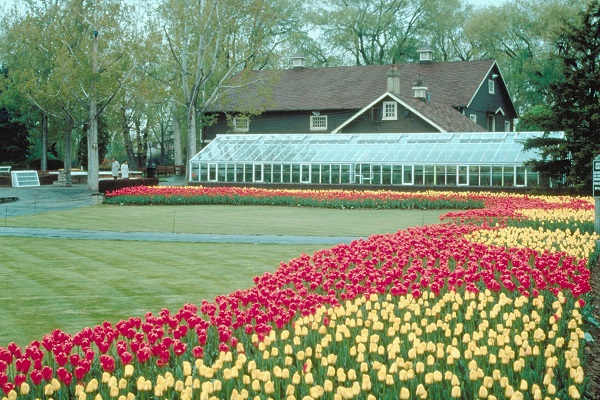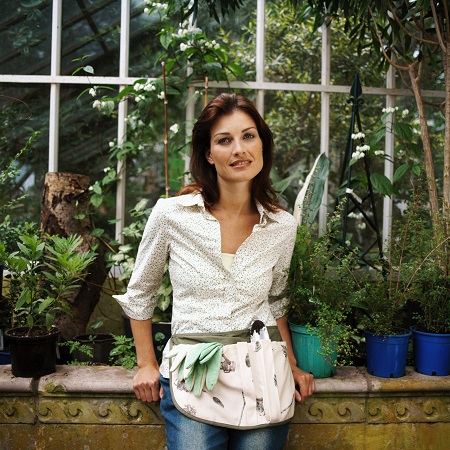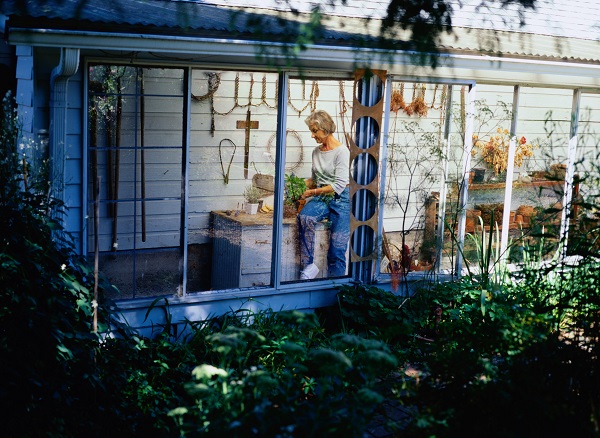
Spring has sprung and we all should be bubbling over with enthusiasm about gardening. Whether we’re planting seeds or transplanting seedlings, it’s a great time for our spirit to be reborn as we watch our plants sprout, leaf out, and start shaping up to enjoy the new growing season. It doesn’t matter whether we’re aiming for roots, shoots, stems, flowers, foliage, shade, or fruit, we’re eager to see the results of our green thumb efforts.
For some of us, we’re still considering whether our gardening pursuits warrant a gardening structure like a greenhouse. After all, it is an expense and a long-range commitment, so no matter how enthusiastic we are this new growing season, we can’t simply dive into it without taking a good, long, hard look at what it’s all about and whether it makes sense.
This article will help you examine some of the reasons why you might need a greenhouse. Let’s call it a needs analysis. Some of the potential drawbacks will be highlighted as well. I do this in the interest of offering balance. It’s useful to see potential downsides to an issue, as this is an indicator that we’ve dug deep enough to find potential showstoppers that might otherwise be overlooked.
This needs analysis should help us determine whether a greenhouse is simply something we want or something more akin to a necessary investment in support of our gardening objectives.
Dedicated Space for a Dedicated Gardener

Gardening in a greenhouse is a bit like working in a repair shop – it’s a dedicated space for conducting the business at hand. Like a repair shop, the greenhouse provides a place for tools, supplies, and activities, and it also provides protection for the gardener, plants, and the many resources necessary for success.
With a dedicated place for gardening, we’re making a long-term commitment that involves time, space, effort and financial investment. In choosing a greenhouse, we’re making a statement that what we grow is such an important part of who we are and what we want to do that it deserves its own permanent location and structure. If the words “serious” and “dedicated” describe your gardening interests, then you might be a candidate for a greenhouse.
Keep in mind that a greenhouse isn’t something that you set up one day and take down after a while, so if you’re an occasional or irregular hobby gardener, a greenhouse probably isn’t a good idea. And, if you have limited space to dedicate to a gardening structure, a greenhouse might be much too costly in terms of real estate.
Protection from the Elements
One of the main reasons many favor greenhouse gardening is to enjoy protection from the elements. It’s one of the primary benefits of a greenhouse, and in a dry, wind-swept environment, that kind of protection can help improve yields and protect the fruits of your labor. Here are the kinds of elements that a greenhouse can help you guard against:
- Heavy rains
- Hail
- Damaging and drying winds
- Destructive critters
- Swarms of hungry insects
- Late frost
- Early and extended winter weather
- Heavy and blowing snow
The numbers of elements you face, and the intensity of the threat they pose will either pull you towards erecting a greenhouse or push you away from the idea. In my case, each of the items listed above is common in my area, so they create quite a pulling effect for me.
If you find that your environment isn’t nearly as challenging, then a greenhouse might not make as much sense in this respect. Nevertheless, you’ll want to carefully review the other areas of interest to determine if a greenhouse is a good choice for you.
Controlled Environment
One of the reasons for establishing a greenhouse is the creation of a controlled environment for growing special plants. Whether its orchids, passionflower, trumpet vines or poinsettias, a controlled environment plays a role in their successful cultivation. The same is true for special fruits and vegetables as well, especially those grown in northern climates where winter needs to be kept at bay. Here are some of the factors that a greenhouse will allow you to control:
- Temperature
- Humidity
- Light
- Soil moisture
- Air circulation
- Pollination
Unless you’re going into commercial production of a particular species of plant, you’ll likely not need to control all of the aforementioned factors. The most common factor that needs to be controlled is temperature. This can be accomplished simply by capturing sunlight, exhausting excess heat, and providing a “blanket” to retain heat during the night. In some cases, you’ll want to provide additional heat to maintain a more constant temperature.
For any of the factors mentioned above, there is a way to provide for it automatically to ensure effective control of the environment. That’s the good news. The not-so-good news is that much of the gear required for automation of control can be expensive to purchase, install and operate, so it is usually not something you see associated with a residential greenhouse.
Extended Gardening Season
For those of us in the northern climates, a short growing season is often reason enough to establish a greenhouse. If we consider that some of us have a relatively unpredictable first and last date for frost, that offers even more reason to admire the ability of greenhouse growers to confidently start early and end late.
If you have a commercial interest, and you need to compete with plant products shipped in from milder climates, a greenhouse becomes essential. It’s likely that you’ll need heated soil and air to promote early and vigorous growth, and that makes an air-tight greenhouse essential for your operation.
If you’re bold enough to attempt winter gardening in a cold northern climate, then a greenhouse offers even more value as it helps extend the season and offers protection for the gardener during times of harsh weather. In such cases, the greenhouse replaces or supplements traditional mulch, and you can move your vegetable gardening adventure well into the winter months – even creating a year-round harvest of cold hardy vegetables.
Home Heating and Living Space
A less thought of reason for having a greenhouse is to expand one’s living space and provide supplemental solar heating for the home. Think of it as a much larger version of an enclosed porch, atrium, or sunroom. If you can capture sunlight, you can extract heat from it. This gives you additional “outdoor” living space in the winter months and can help reduce the cost of heating your home during daylight hours.

This is probably a more compelling reason for those of us contemplating new home construction, simply because a greenhouse can be more easily integrated with the design and orientation of the home. Nevertheless, it’s also desirable in the event we’re fortunate enough to have a nice open space adjacent to our home that has good southern exposure – a situation that begs for a greenhouse to capture the great outdoors inside an extension of the house.
More importantly, a greenhouse is a passive way of efficiently capturing heat from the sun for use in reducing home heating costs. In most cases, an active means of air recirculation would be desirable, but depending on its placement, it’s possible to use natural convection and conduction to transfer captured solar gain through open doors and adjacent walls that have appreciable thermal mass.
This idea is closely related to the concept of an envelope, buried or earthen mound style house. I know a man in Wyoming who retrofitted his home with a tightly sealed triple pane greenhouse, and his only problem is what to do with the excess heat he generates. Even in the winter, when ambient temperatures are ten degrees below zero, air temperatures inside his greenhouse can reach over 100 degrees. For those who are trying to heat their home as cheaply as possible, that sounds like a good problem to have.
Self Determination and Self Sufficiency
Last on my list in terms of needs analysis is the idea of greater self reliance and less dependence on others. I find being more self sufficient to be a virtue, and many share this value. Although I’m not suggesting we’ll see a marketplace collapse or food shortages, it’s clear that we have become increasingly dependant on others to provide our food, and we’ve suffered in terms of cost, quality and contamination because of it.
Next to water, food is fundamental for life, so for the self reliant among us, the idea of dependency isn’t at all appealing. Here is where a greenhouse can help us work towards greater self sufficiency in terms of fruits and vegetables. The advantages of this approach to gardening include control over:
- Seed origin
- Methods of production
- Timing of harvest
- Pest and disease management
- Variety
- Quality
- Price
To be sure, much of this can be accomplished with an open sun garden, but a greenhouse will allow us to do it much better as it offers protection, promotes higher yields, and extends the season for growing and harvest. As an example, vegetables grown outdoors only provide about half the yield when compared to those grown inside a greenhouse. Other advantages of greenhouse vegetable gardening include:
- Reduced need to can and freeze, as many crops can be left in place until you’re ready to harvest.
- Year-round production in mild climates, and year round harvest in moderate to harsh climates.
- Enhanced ability to grow varieties of small fruit trees, bushes and vines that might otherwise be outside of your grow zone.
If you have your eye on being more self-sufficient in terms of a clean, fresh, reliable source of whole food, a greenhouse just might be a good investment in your future. If you’re looking to create your own revenue stream by being a supplier of specialty foods to local restaurants, it seems like a greenhouse might make good sense. What could be more self sufficient than home-grown self employment?
Clair Schwan is an avid vegetable gardener who considers his gardens to be important assets. To him, vegetables in the garden are a bit like money in the bank.
Related Articles & Free Email Newsletter
Free Cactus & Succulent Fertilizer Sample
Active Solar Heating for Greenhouses
Making Your Own Cloche from Just About Anything



Comment here